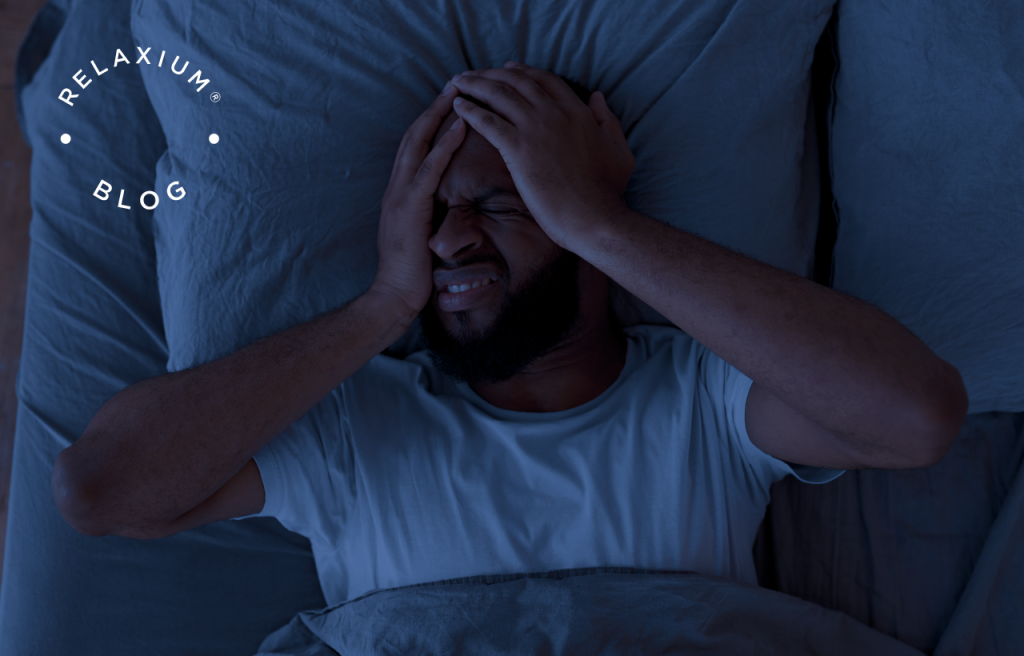Discover how restless leg syndrome (RLS) can disrupt your sleep. Explore the intricate relationship between RLS and sleep quality, and gain insights into managing this condition for a more restful night’s sleep.
Among the many different sleep disorders, there is one that can make the daily pursuit of sleep a restless struggle; Restless Leg Syndrome (RLS). For some, as they lie in bed ready for sleep, they start to have an irresistible urge to move their legs. As the sun dips below the horizon and the world drifts into dreams, individuals afflicted by RLS embark on a unique journey—a journey marked by a constant tug-of-war between the desire for sleep and the compulsion to move.
We are going to navigate the connection between RLS and sleep quality, highlighting the ripple effects that these restless sensations send through the night.
What is Restless Leg Syndrome (RLS)?
Restless Leg Syndrome (RLS), a neurological disorder, poses a unique threat to certain people’s daily lives and sleep routines alike. Characterized by an irresistible urge to move the legs, often accompanied by uncomfortable sensations like crawling, tingling, or itching, RLS strikes most notably during periods of rest and relaxation, particularly in the evening and nighttime hours.
This enigmatic condition defies the logic of stillness, creating an overwhelming sensation that compels individuals to constantly shift or move their legs in search of relief. The true nature of RLS resides in the intricate interplay of neurochemistry and genetics, and its impact goes far beyond the physical realm, affecting emotional well-being and wreaking havoc on the quest for restful sleep.
Symptoms of RLS
Restless Leg Syndrome has a number of distinct symptoms, primarily in the legs. Though these symptoms can vary in intensity and frequency. Common signs include:
- The irresistible urge to move: The largest symptom of RLS is the overwhelming and involuntary urge to move the legs. This is alongside a deep discomfort or sensation that many describe as crawling, tingling, itching, burning, or aching.
- Worsening at rest: RLS symptoms tend to worsen when a person is at rest, especially when lying or sitting down. It mostly occurs at night, making it disruptive to sleep.
- Temporary relief through movement: Any movement, whether it be walking, stretching, or even shifting positions can provide temporary relief from the discomfort of RLS. It is often short-lived though, with the sensations returning once the legs are still once again.
- Nocturnal disruption: Because RLS frequently interrupts sleep, it can be difficult for those who struggle with RLS to fall and stay asleep. This often leads to excessive daytime fatigue, sleepiness, and impaired cognitive function.
- Variability in symptoms: RLS symptoms can range in intensity. Some experience intermittent discomfort and others have more constant and severe sensations.
- Sensations bilaterally: RLS symptoms usually affect both legs or are sometimes more pronounced in one. In some cases, sensations can also be felt in the arms.
- Circadian rhythm patterns: The symptoms of RLS typically follow a circadian rhythm. This can make sense as to why it is typically more pronounced in the evening and nighttime hours.
- Family history and genetics: RLS can run in families which suggests a genetic component. Those who have family members with RLS may be more predisposed to developing the condition.
How to get sleep even with RLS
Though it can be very challenging, there are some strategies that can be followed to improve your sleep quality even with symptoms. These include:
- Establishing a consistent sleep schedule
- Limit stimulants
- Create a comfortable sleep environment
- Engage in regular exercise
- Take a warm bath
- Medication and treatment
- Consider a sleep diary
Establishing a consistent sleep schedule
Go to bed and wake up at the same time each day to regulate the body’s internal clock, improving sleep quality. Make sure to pick times that work best with your schedule and keep to it, even on weekends. Regulate your sleep schedule by taking Relaxium Sleep before bed. Relaxium Sleep is a sleep supplement designed to help you fall asleep faster, stay asleep longer, and wake up feeling more refreshed and alert.
Limit stimulants
Avoid consuming caffeine or nicotine too close to bedtime. Stimulants such as these can interfere with the ability to fall asleep.
Create a comfortable sleep environment
Make your bedroom conducive to sleep. Do this by keeping it dark, quiet, and cool. Maybe consider investing in more comfortable mattresses and pillows.
Engage in regular exercise
Regular exercise can be beneficial for alleviating RLS symptoms for some individuals. Avoid exercising too close to bedtime though as it may exacerbate symptoms before sleep.
Take a warm bath
Take a warm bath or use a warm compress on your legs before bed. This can help to relax your muscles, soothing RLS discomfort.
Medication and treatment
If RLS symptoms persist, you may want to consult a healthcare professional to explore medication options to relieve said symptoms. There are some that can alleviate discomfort as well as improve sleep quality.
Consider a sleep diary
Keep a sleep diary so you are better able to track your sleep patterns and RLS symptoms. This information gathered can be valuable when discussing your condition with a healthcare professional.

Use these strategies to combat RLS and sleep deprivation
RLS is a very difficult sleep disorder to manage. It is important to do whatever you can to improve sleep while also seeking help for RLS.
Relaxium offers a number of safe and effective supplements that aid in the categories of sleep, calm, focus, and immunity. Created by Clinical Neurologist, Dr. Eric Ciliberti, TryRelaxium.com offers a 30-day Money Back Guarantee trial of Relaxium Sleep to allow our users to truly experience its effects. To try the product today visit our website for more information.
To restful and healthy days ahead.
The Relaxium Team
*These statements have not been evaluated by the Food & Drug Administration. This product is not intended to diagnose, treat, cure, or prevent any disease.
Sources:
https://www.mayoclinic.org/diseases-conditions/restless-legs-syndrome/symptoms-causes/syc-20377168

